Subphylum Vertebrata Suborder Lacertilia | Family Varanidae | |
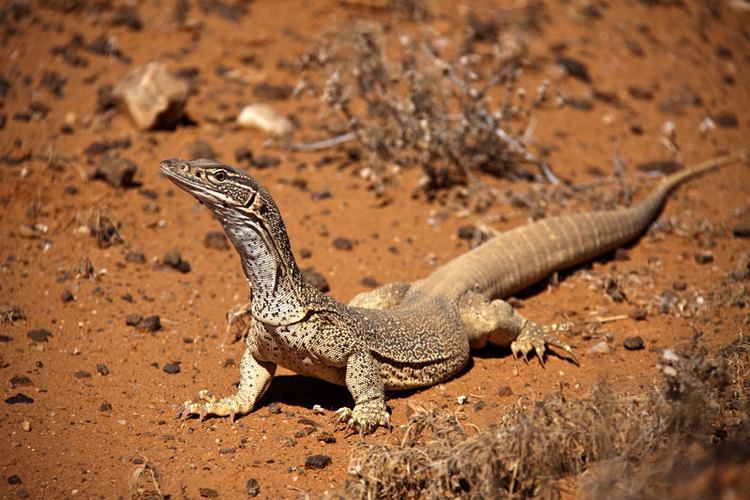 | ||
Similar Monitor lizard, Reptile, Argus monitor, Lace monitor, Black‑headed monitor | ||
Sand goanna
The sand goanna (Varanus gouldii ) is a species of large Australian monitor lizard, also known as Gould's monitor, the sand monitor, or racehorse goanna.
Contents
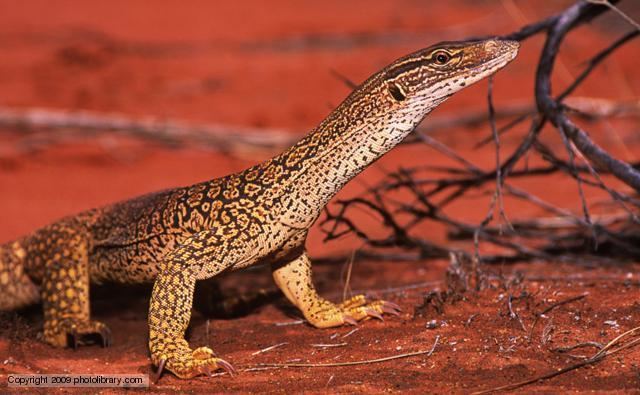
In some Aboriginal languages, the sand goanna is called bungarra, a term commonly used by nonaboriginal people in Western Australia, too. In Pitjantjatjara and other central Australian languages it is called "Tingka".
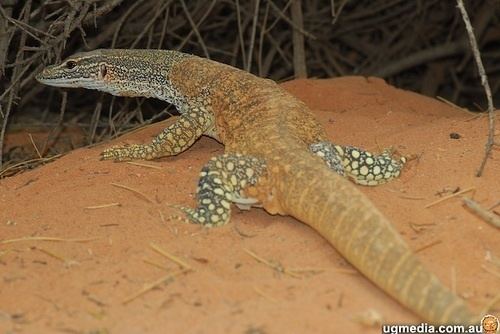
The name "sand monitor" can be used to describe various other species.
Angelas sand goanna
Etymology

The specific name, gouldii, is a Latinized form of the name of the scientist who first described this species, English ornithologist John Gould.
Biology
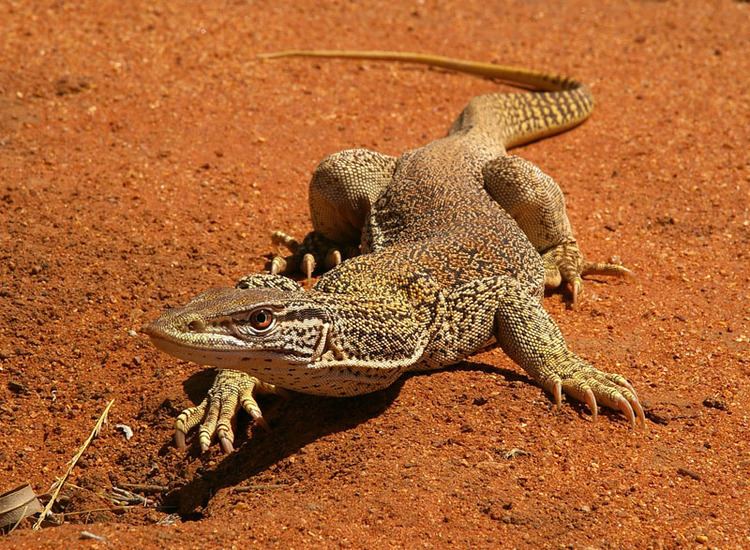
Gould's monitor is a terrestrial or "ground-dwelling" reptile that excavates large burrows for shelter. Rock escarpments and tree hollows are also suitable dwellings. V. gouldii inhabits a vast range throughout Australia, and reaches an average length of 140 cm (4.6 ft) and can weigh as much as 6 kg (13 lb). They can be found in northern and eastern Australia, where they inhabit open woodlands and grasslands. V. g. flavirufus, a slightly smaller subspecies, resides in Australia's interior. In some places, however, the ranges of Gould's, V. g. flavirufus and the Argus monitor overlap. The similarities between the species and their close proximity frequently cause confusion.
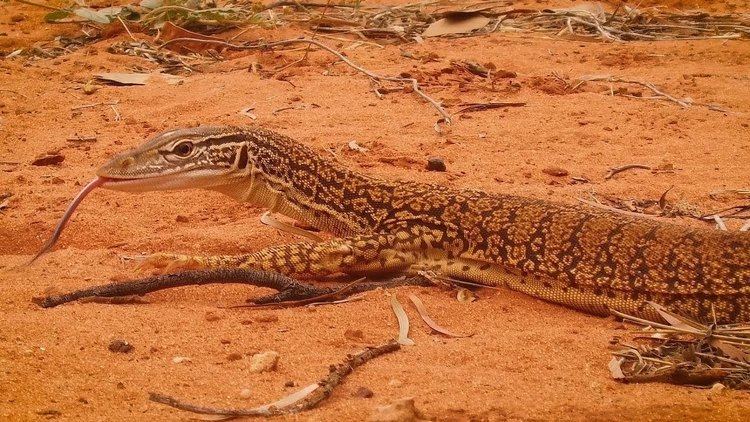
The sand monitor is a relentless forager. It is diurnal, meaning most of its activities take place during the day. Anything smaller than itself will be eagerly devoured. The diets of hatchlings and juveniles often consist mostly of insects and small lizards, but generally varies more with age. Adult monitors will prey on mice, small birds large insects, small lizard species, snakes, and carrion. They are seemingly immune to snake venom and will kill and eat even the most venomous species such as the fierce snake. The sand goanna does consume smaller species of monitors: Ackies, rock monitors and other dwarf species are often found and eaten. It is common to see a Gould's disturbing rock piles in an attempt to flush out any Odatria. It lays its eggs in termite mounds to protect them from the harsh desert climate.

Like all goannas and snakes the sand monitor has a forked tongue, with which it "tastes" the air. Scents are picked up on each side of the fork which, when retracted, brushes over an area in the mouth called the Jacobson's organ, which identifies on which side the scent is stronger. Upon identifying this difference in scent strength the sand monitor can alter its direction accordingly.
